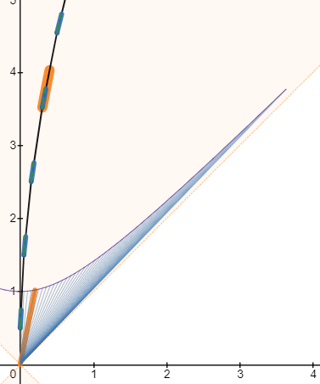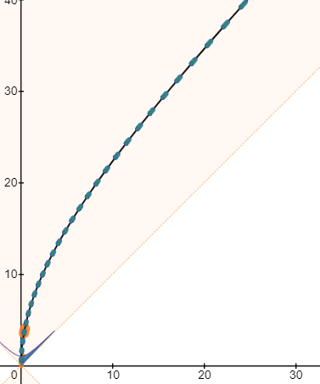In the context of special relativity, the description of "harder to accelerate" is from a fixed inertial frame [as @m4r35n357 said in the comments] and it's as @Marco says that it's due to the addition of velocities in relativity.
This visualization I made in Desmos might help:
https://www.desmos.com/calculator/tjngj63cat
Constant proper acceleration means that the change-in-rapidity $\Delta \theta$ ("Minkowski-angle") is proportional to proper time ["astronaut wristwatch time"] $\Delta\tau$ ("Minkowski arc-length"). (Proper-acceleration is akin to worldline-curvature, measuring the deviation from being a geodesic by the turning of the tangent-vector.)
The accelerated worldline is a hyperbola with timelike-tangents [time running upwards] and I have broken it up into sections suggesting the changes-in-rapidity for equal amounts of astronaut-proper-time. The astronaut's spatial-velocity according to the lab frame given by $c\tanh\theta$, essentially the astronaut's (orange) 4-velocity vector's slope with respect to the vertical [lab-frame worldline].
($v=c\tanh\theta$ is analogous to the Euclidean case where the slope is equal to the tangent of the angle of the tangent-vector: $m=\tan\phi$.)
As $\theta$ increases without bound, $v_{astronaut}=c\tanh\theta$ asymptotically approaches $c$. You may have to zoom-out to see this behavior.
As the motion progresses (advance the $N_i$-slider in the visualization), subsequent equal-changes-in-rapidity correspond to decreasing-changes-in-spatial-velocity according to the lab frame.
These equal-changes-in-rapidity can be visualized as proportional to the equal-area hyperbolic sectors of the unit-hyperbola [with spacelike-tangents] cut by successive radii (representing the astronaut's 4-velocity in the lab frame).
In the non-relativistic case (where the PHY 101 position-vs-time graph has a [non-Euclidean] "Galilean spacetime geometry"), it turns out that the Galilean-rapidity (Galilean-angle) is [degenerately] proportional to the slope. This special case is part of our "common sense" and makes it difficult for us to see the more general situation that slope and angle are not proportional (as it is in Special Relativity and Euclidean geometry).
To play with this idea, tune the E-slider
in my
https://www.desmos.com/calculator/emqe6uyzha
robphy's "spacetime diagrammer" for relativity v.8e-2021.
E=1 corresponds to Special Relativity, E=-1 is Euclidean Geometry, and E=0 is Galilean Relativity.


